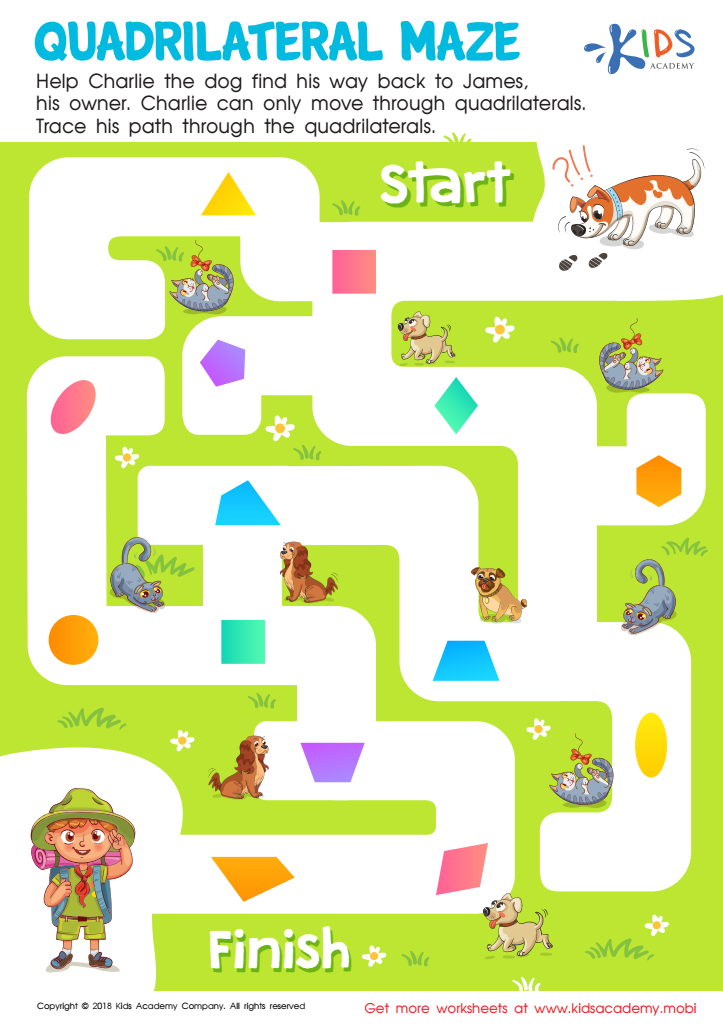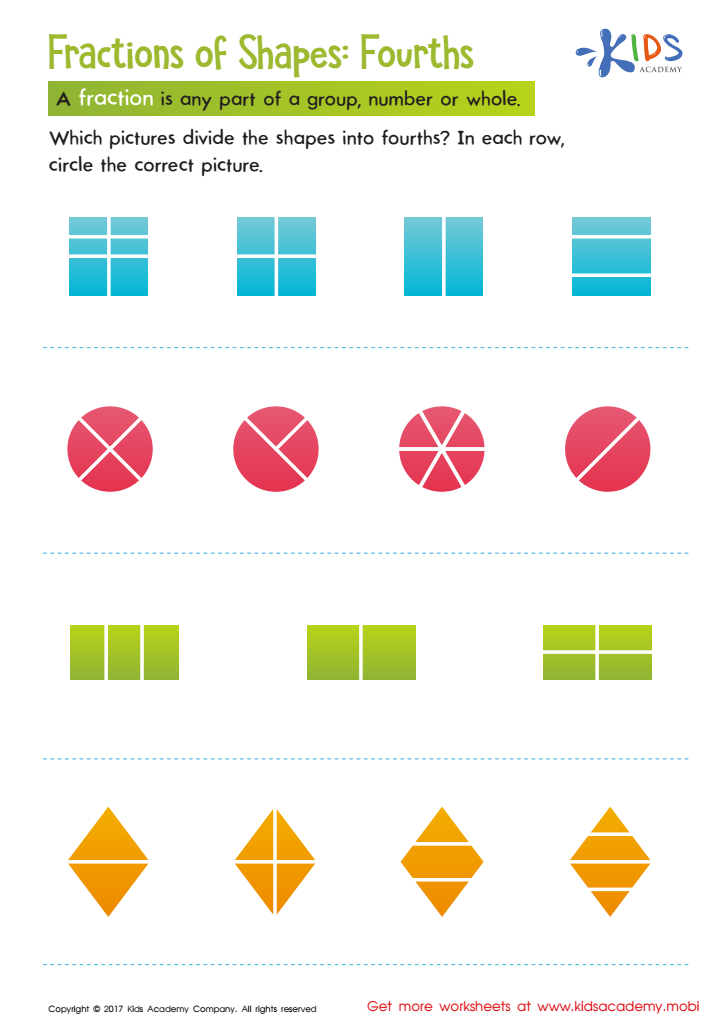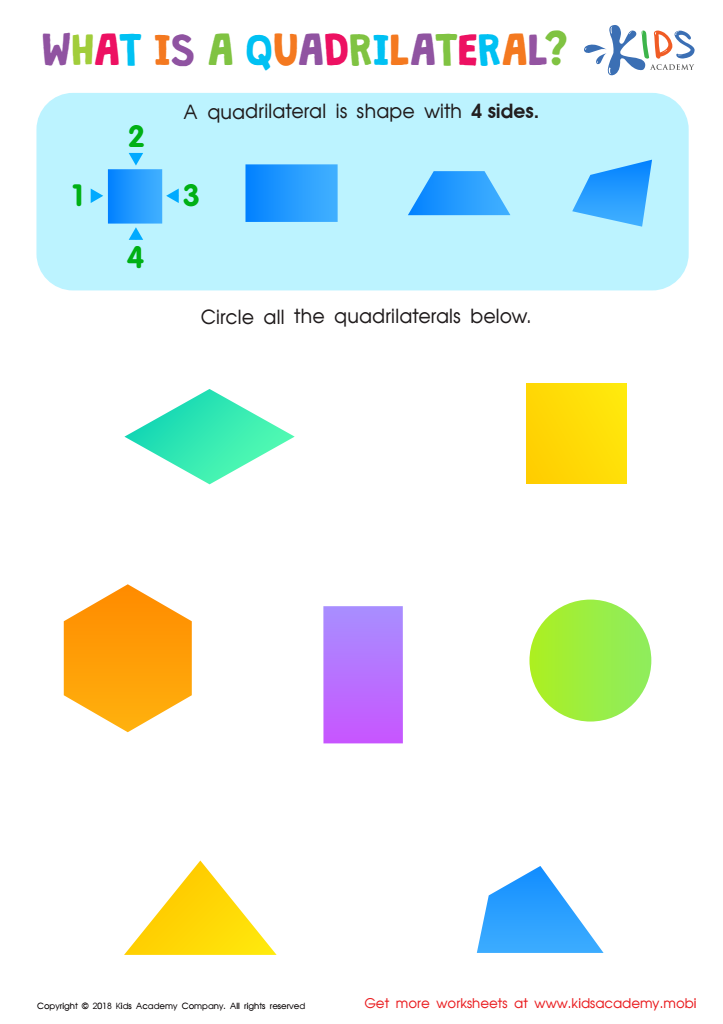Recognizing shapes Geometry Worksheets for Ages 4-9
6 filtered results
-
From - To
Welcome to our "Recognizing Shapes Geometry Worksheets for Ages 4-9" page! Perfect for young learners, these engaging worksheets help children identify, categorize, and understand various shapes through fun activities. Ideal for preschool to early elementary students, our resources support foundational geometric skills while enhancing critical thinking and visual recognition. With a variety of colorful illustrations and interactive exercises, kids will explore circles, squares, triangles, and more, honing their ability to recognize shapes in their everyday world. Empower your child's learning journey with our expertly designed worksheets that make geometry enjoyable and accessible! Browse and download today to start exploring shapes!


Congruent Shapes Worksheet


Lines of Symmetry Printable


Geometry: part 1 Worksheet


Quadrilateral Maze Worksheet


Fractions of Shapes Worksheet


What Is a Quadrilateral? Worksheet
Recognizing shapes is a crucial component of early geometry education for children aged 4-9. Parents and teachers should prioritize this skill as it lays the foundation for advanced mathematical understanding and critical thinking. By engaging with shapes, children develop spatial awareness, which enhances their ability to visualize objects and understand their relationships in space. This skill not only fosters mathematical aptitude but also boosts problem-solving abilities that are essential in everyday life.
Furthermore, recognizing shapes integrates various subjects, promoting cognitive skills across the curriculum. It aids in language development as children learn to describe and categorize shapes, enhancing their vocabulary and communication skills. Shape recognition also encourages creativity and fine motor skills, as children engage in activities like drawing and constructing with blocks.
Additionally, this knowledge serves practical purposes, helping children recognize patterns, develop safety awareness (e.g., understanding road signs), and build a strong foundation for further studies in geometry, measurement, and even later, calculus concepts. By nurturing shape recognition at an early age, parents and teachers are equipping children with vital lifelong skills, preparing them not only for advanced math but also fostering critical thinking and observational skills that are invaluable in real-world scenarios.
 Assign to My Students
Assign to My Students
































